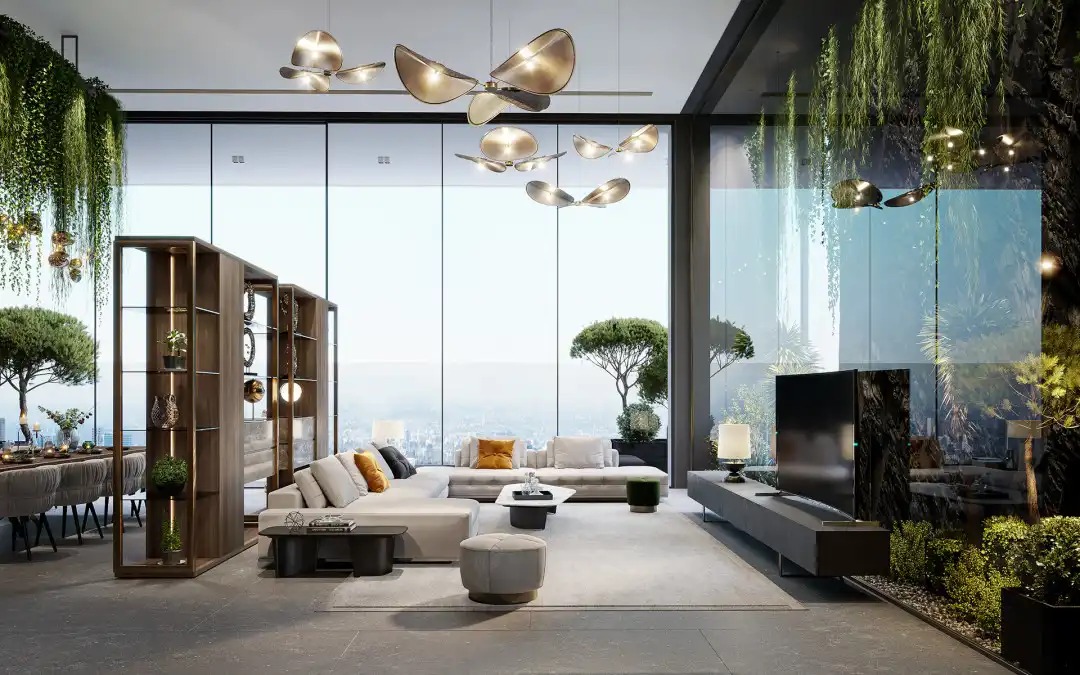
The Art of Creating Harmonious Spaces: A Dive into Modern Interior Design
In today’s fast-paced world, our homes have become more than just shelters; they are sanctuaries where we seek comfort, inspiration, and a reflection of our personal style. The field of Interior Design has evolved significantly over the years, adapting to changing lifestyles and technological advancements. This article explores the current trends, challenges, and innovations shaping the way we approach the design of our living spaces.
One of the most prominent shifts in recent years has been the emphasis on sustainability and eco-friendly design. Consumers are increasingly conscious of their environmental impact, leading to a surge in demand for sustainable materials and energy-efficient solutions. Designers are responding by incorporating recycled materials, low-VOC paints, and energy-saving appliances into their projects. This green approach not only benefits the planet but also creates healthier living environments for occupants.
Let’s learn when installing the window board.
The concept of multifunctional spaces has gained traction, especially in urban areas where square footage comes at a premium. Clever storage solutions, convertible furniture, and adaptable layouts allow homeowners to maximize their living areas without sacrificing style or comfort. For instance, a home office that transforms into a guest room or a kitchen island that doubles as a dining table exemplifies this trend towards versatility.
Technology integration has become a crucial aspect of modern Interior Design. Smart home systems that control lighting, temperature, and security are now commonplace in many households. Designers must consider how to seamlessly blend these technological elements with the aesthetic appeal of a space, creating environments that are both functional and visually pleasing.
The digital age has also transformed how interior designers market their services and reach potential clients. Platforms – one of them being Microsoft Advertising, have become invaluable tools for design professionals looking to showcase their portfolios and connect with a broader audience. These digital marketing strategies allow designers to target specific demographics and geographical areas, helping them to grow their businesses more effectively.
Color psychology continues to play a significant role in Interior Design. The careful selection of color palettes can dramatically influence the mood and atmosphere of a space. While neutral tones remain popular for their versatility, we’re seeing a resurgence of bold, expressive colors used as accents or statement pieces. These pops of color can energize a room and reflect the personality of its inhabitants.
The concept of biophilic design, which seeks to connect occupants more closely with nature, has gained momentum in recent years. This approach incorporates natural elements such as plants, water features, and organic materials into interior spaces. By bringing the outdoors in, designers can create environments that reduce stress, improve air quality, and enhance overall well-being.
As our world becomes increasingly interconnected, global influences are making their way into home design. Eclectic styles that blend cultural elements from various parts of the world are gaining popularity. This fusion of design traditions not only creates visually interesting spaces but also reflects our increasingly diverse and globalized society.
The importance of proper lighting in Interior Design cannot be overstated. Designers are experimenting with layered lighting schemes that combine ambient, task, and accent lighting to create depth and atmosphere. The use of natural light is also being maximized through strategic window placement and the incorporation of reflective surfaces.
In the realm of commercial spaces, the focus has shifted towards creating environments that promote productivity, collaboration, and employee well-being. This has led to the rise of innovative office designs that blur the lines between work and leisure, featuring elements such as breakout areas, green spaces, and flexible workstations.
As the field of Interior Design continues to evolve, it’s clear that the future holds exciting possibilities. From virtual reality tools that allow clients to visualize designs before implementation to the use of sustainable, high-tech materials, the industry is constantly pushing boundaries. Publications, including ADR Times keep professionals and enthusiasts alike informed about the latest trends and innovations in the field, serving as a valuable resource for those looking to stay ahead of the curve.
Conclusion
In conclusion, modern Interior Design is a dynamic and multifaceted discipline that combines aesthetics, functionality, and technology to create spaces that enhance our daily lives. As we look to the future, it’s clear that the most successful designs will be those that can adapt to our changing needs while providing beauty, comfort, and a sense of connection to the world around us.
